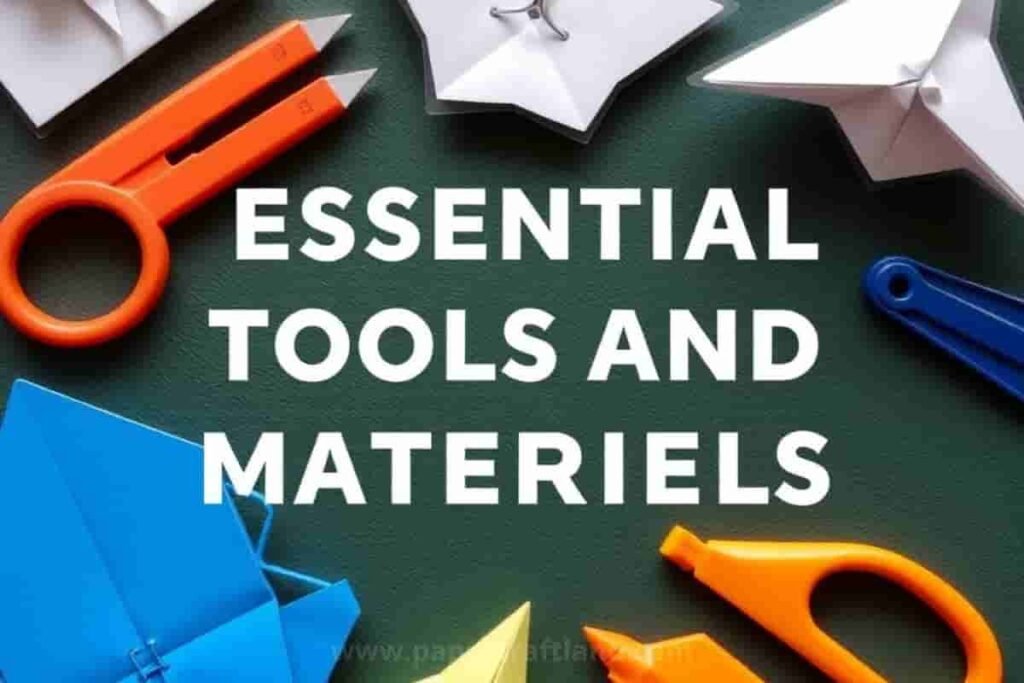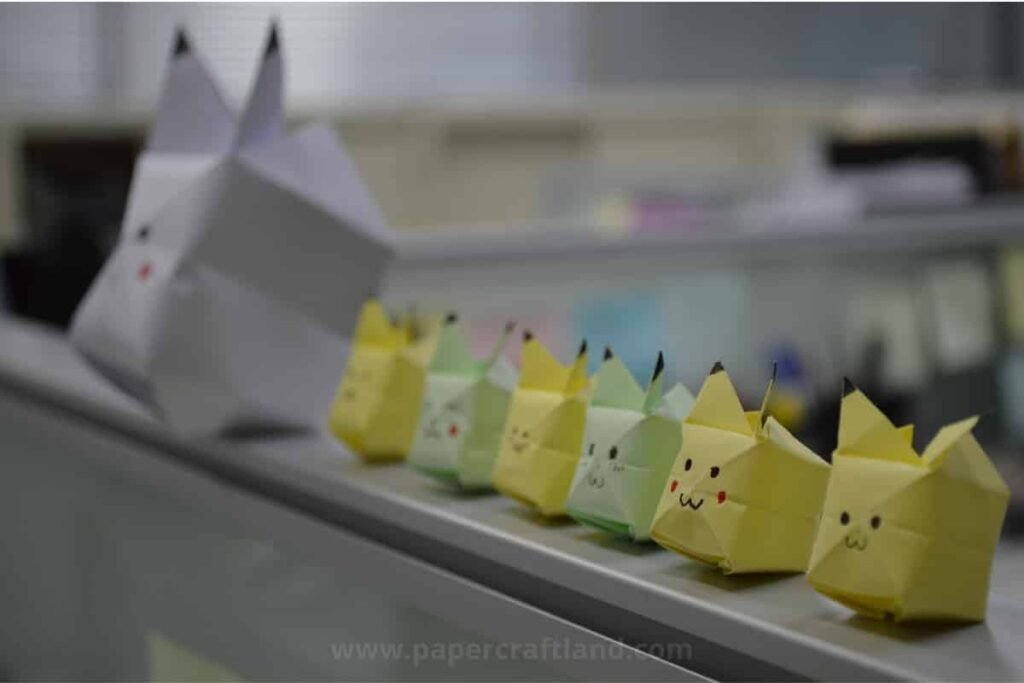Introduction to Origami
Origami, the traditional Japanese art of paper folding, has captivated minds for centuries. What began as a simple craft has evolved into a sophisticated art form, influencing various fields from education to engineering.
Originating in Japan over a thousand years ago, origami was initially reserved for religious and ceremonial purposes. However, as paper became more accessible, the art spread across all social classes, and today, it is a beloved pastime worldwide.
Modern origami is not just about creating simple paper cranes; it involves intricate designs that require both artistic and mathematical skills. The cultural significance of origami remains strong, symbolizing peace, patience, and creativity. In recent years, origami has found applications in unexpected places, from space exploration to medical devices, showcasing its versatility and relevance.
- Introduction to Origami
- Basic Principles of Origami techniques
- Essential Tools and Materials
- Foundational Folds in Origami
- Advanced Origami Techniques
- Understanding Origami Diagrams
- Popular Origami Models and Their Techniques
- Common Mistakes and How to Avoid Them
- The Global Community of Origami Enthusiasts
- The Role of Origami in Education and Therapy
- Origami in Modern Science and Technology
- How to Progress in Origami: From Beginner to Expert
- The Role of Origami in Education and Therapy
- Conclusion
- FAQs
Basic Principles of Origami techniques
Origami is at its heart, an art of precision and patience. Every fold, crease, and tuck must be executed with care, as even a slight misalignment can affect the final outcome. The type of paper used is equally important; different sizes, thicknesses, and textures of paper can drastically alter the folding process and the model’s appearance.
Understanding these basic principles is crucial for anyone starting their journey in origami. The paper should be handled gently but firmly, and folds should be made with accuracy to ensure clean lines. As you progress, you’ll develop a feel for how the paper behaves, which is essential for mastering more complex models.
Essential Tools and Materials

While traditional Origami requires nothing more than a square piece of paper, there are a few tools that can make the process easier and more enjoyable.
The most common paper types include kami (thin, easy-to-fold paper), foil-backed paper (for more durable models), and even tissue paper for delicate creations.
Optional tools such as bone folders can help create crisp folds, while tweezers are useful for handling small or intricate models. Scissors are generally avoided in traditional Origami, but they are essential for Kirigami, a variation that involves cutting the paper.
Foundational Folds in Origami
The Valley Fold
The valley fold is often the first fold that beginners learn. It involves folding the paper in half so that it forms a valley shape when viewed from the side. This fold is the foundation of many origami models and is crucial for creating symmetrical designs.
The Mountain Fold
The mountain Fold is the opposite of the Valley fold. When the paper is folded, it forms a peak or mountain shape. Like the Valley Fold, the mountain Fold is fundamental and is used in almost every origami project.
The Squash Fold
The squash Fold is a technique used to flatten a part of the paper by opening it and pressing it down. This fold is commonly used in creating bases for more complex designs, such as the bird base for the traditional crane.
The Reverse Fold
The reverse fold is a more advanced technique that involves folding the paper in one direction and then folding it back in the opposite direction. There are two main types: the inside reverse fold and the outside reverse fold, both of which are used to create detailed features in models like animal legs or bird beaks.
The Pleat Fold
The pleat fold involves creating a series of parallel folds that alternate in direction, like an accordion. This fold is often used in creating wings for birds or fins for fish, adding texture and depth to the model.
Advanced Origami Techniques

Wet-Folding
Wet-folding is a technique that allows the paper to be manipulated more easily, making it possible to create soft curves and rounded edges. The paper is slightly dampened before folding, which gives it more flexibility. This technique is often used in creating more lifelike models, such as animals.
Modular Origami
Modular origami involves creating multiple units or modules that are then assembled to form a larger, more complex model. Each module is folded separately, and then they are combined without the use of glue to create geometric shapes and other intricate designs.
Tessellation
Tessellation is a technique where a single sheet of paper is folded to create a repeating pattern. This technique is more advanced and requires a deep understanding of how the paper can be manipulated to create complex designs. Tessellations are often used in creating artistic patterns or backgrounds.
Kirigami
Kirigami is a form of origami that incorporates both cutting and folding the paper.
This technique allows for the creation of pop-up designs, intricate patterns, and even three-dimensional structures. Kirigami is often used in card-making and other paper crafts where added detail is desired.
Action Origami
Action origami refers to models that can move or perform a specific action, such as flapping wings or hopping. These models often require a combination of different folds and sometimes even include the use of rubber bands or other materials to create the desired motion.
Understanding Origami Diagrams
Origami diagrams are the universal language of origami, using standardized symbols and notations to guide folders through each step of the process.
Learning to read these diagrams is essential for progressing in origami, as they provide the instructions needed to create both simple and complex models.
Symbols include arrows indicating the direction of the fold, dashed lines for mountain folds, and solid lines for valley folds.
Popular Origami Models and Their Techniques
The Crane
The crane, one of the most iconic origami models, starts with a square piece of paper and involves creating the bird base, a foundational structure in origami. The technique includes several key folds: valley folds, mountain folds, and reverse folds, which shape the crane’s long neck, pointed beak, and elegant wings.
Precision in folding is crucial to achieving the crane’s symmetrical and graceful form. Traditionally, the crane symbolizes peace and good fortune, and folding 1,000 cranes is believed to grant a special wish. It’s a popular model for both beginners and experienced folders due to its beauty and cultural significance.
The Butterfly
The origami butterfly is another popular model, known for its delicate beauty. This model involves a combination of mountain and valley folds, as well as a reverse fold to create the butterfly’s wings. The butterfly is often used in decorative origami, adding a touch of elegance to any display.
The Flower
Origami flowers come in many variations, from the simple tulip to the more complex rose. Each flower requires a different set of folds, but all share the common goal of mimicking the natural beauty of real flowers. Origami flowers are often used in bouquets, centerpieces, and other decorative arrangements.
Common Mistakes and How to Avoid Them

Misaligned Folds
One of the most common mistakes in origami is making misaligned folds. Even a slight deviation can lead to a lopsided model. To avoid this, take your time with each fold, ensuring that the edges and corners align perfectly.
Using the Wrong Type of Paper
Not all paper is suitable for origami. Using paper that is too thick or too thin can make certain models difficult to fold or result in a model that doesn’t hold its shape. Experiment with different types of paper to find the one that works best for the model you are creating.
Rushing Through the Process
Origami requires patience. Rushing through the folds can lead to mistakes and frustration. Take your time with each step, and enjoy the process of creating something beautiful from a simple piece of paper.
The Global Community of Origami Enthusiasts
Origami has a vibrant global community, with enthusiasts sharing their work and techniques online and in person. Social media platforms, forums, and dedicated websites are excellent places to connect with other origami lovers, share your creations, and learn new skills.
Major origami conventions and exhibitions also take place around the world, where artists showcase their work and offer workshops to teach various techniques.
The Role of Origami in Education and Therapy
Origami has found a place in both educational settings and therapeutic practices. In classrooms, it is used to teach concepts such as geometry, fractions, and spatial reasoning. In therapy, origami can be a relaxing and meditative activity, helping to reduce stress and improve focus. The tactile nature of origami also makes it an excellent tool for improving fine motor skills and hand-eye coordination.
Origami in Modern Science and Technology
Origami’s influence extends far beyond the art world. In science and technology, Origami principles are being used to solve complex problems. For example, NASA has used origami to design foldable spacecraft components that can be compactly stored during launch and then expanded in space.
In medicine, origami-inspired designs have led to the creation of stents that can be inserted into the body in a compact form and then expanded to support blood vessels.
How to Progress in Origami: From Beginner to Expert
To become proficient in origami, practice is key. Start with simple models and gradually move on to more complex designs as you become more comfortable with the basic folds. Additionally, attending workshops and conventions can offer the opportunity to learn from experienced folders and to connect with the global origami community.
The Role of Origami in Education and Therapy

Origami has found a place in both educational settings and therapeutic practices. In classrooms, it is used to teach concepts such as geometry, fractions, and spatial reasoning. In therapy, origami can be a relaxing and meditative activity, helping to reduce stress and improve focus. The tactile nature of origami also makes it an excellent tool for improving fine motor skills and hand-eye coordination.
Conclusion
Origami is more than just a paper-folding art; it’s a journey of creativity, patience, and precision. From its humble beginnings in Japan to its modern-day applications in science and technology, origami continues to captivate and inspire people of all ages. Whether you’re folding your first crane or mastering complex tessellations, the art of origami offers endless opportunities for exploration and growth.
FAQs
- What type of paper is best for Origami?
The best paper for Origami depends on the model you’re making. Kami paper is great for beginners, while more advanced folders might prefer tissue paper, foil-backed paper, or specialty Origami paper.
- How long does it take to master Origami?
Mastering Origami can take years, depending on the complexity of the models you wish to create. Consistent practice and learning new techniques are key to progress.
- Can Origami be used in practical applications?
Yes, Origami principles are used in various fields, including engineering, medicine, and space exploration, demonstrating the art’s practical applications beyond traditional paper folding.
- Are there health benefits to practicing Origami?
Practicing Origami can be therapeutic, helping to reduce stress, improve focus, and enhance fine motor skills, making it beneficial for mental and physical health.
- What are some beginner-friendly Origami models?
Beginner-friendly models include the paper crane, boat, and frog. These models use basic folds and provide a good foundation for learning more complex designs.
- Can children learn Origami?
Yes, Origami is a great activity for children, helping develop fine motor skills, concentration, and creativity.
- Do I need special paper for Origami?
No, while specialized Origami paper is ideal, you can start with any square sheet of paper.




